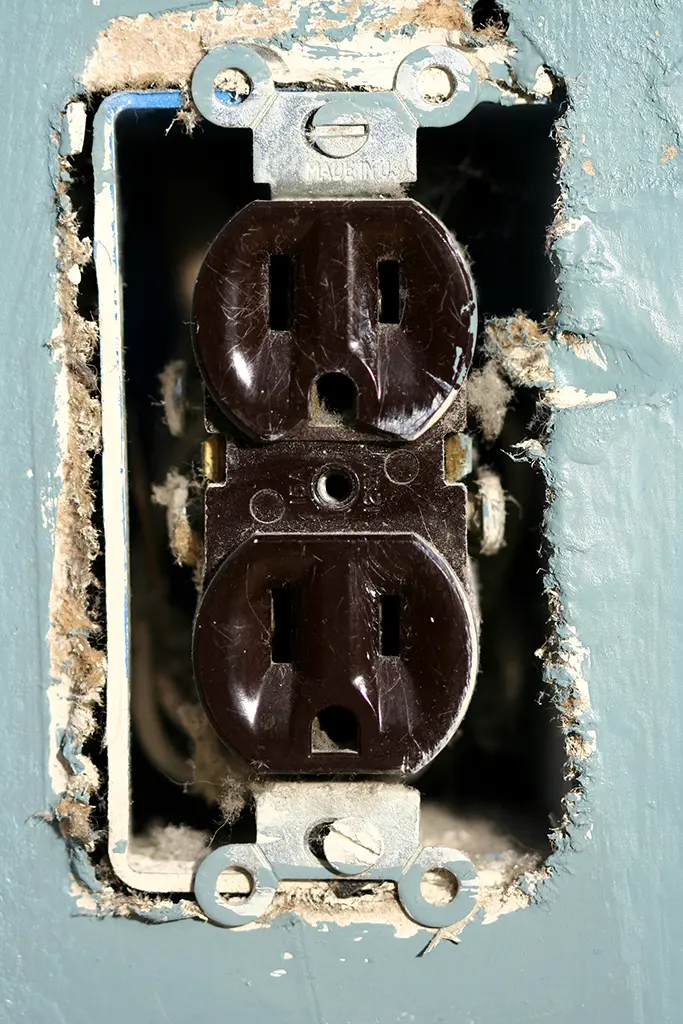5 Common Electrical Issues in San Antonio Homes
As homes in San Antonio age, it’s common for electrical issues to arise. Our hot summers put a lot of strain on electrical systems, and problems can occur if wiring hasn’t been updated. At Alamo City Handymen, we frequently see homeowners needing help with several common electrical issues. Here are five of the most common electrical problems we find in San Antonio homes.

1 - Faulty Electrical Outlets
Loose, damaged or worn out electrical outlets are one of the top electrical hazards found in San Antonio homes. Signs of faulty outlets include:
- Outlets that are loose and don’t grip plugs securely. This can allow heat buildup at connection points and increase fire risks.
- Outlets that show signs of scorching or emit a burning smell. This indicates overheating and wiring damage.
- Outlets that spark when plugs are inserted or removed. Sparking is a telltale sign of loose connections.
- Outlets that give you a shock when you go to unplug an item. This reveals exposed wiring that poses a serious electrocution risk.
- Cracked, damaged or broken outlet covers. Damaged covers can’t contain sparks or shock hazards.
- Discolored outlets may signal moisture damage or corrosion.
- Outlets that simply stop working are likely worn out or have bad connections.
Faulty outlets become extremely dangerous if left unrepaired. The wiring damage can easily spread to surrounding areas behind walls and ceilings. It’s critical that any damaged, malfunctioning outlet be replaced right away by a licensed electrician. We recommend upgrading to tamper-resistant outlets for safety.

2 - Ground Fault Circuit Interrupters (GFCIs) Tripping
GFCIs are special circuit breakers designed to prevent electric shocks. They monitor electricity flowing in a circuit and quickly cut off power if a ground fault is detected. Ground faults occur when current is leaking somewhere, such as through water or a damaged appliance.
It’s normal for a GFCI to trip if there are ground faults present. However, when a GFCI trips repeatedly and won’t reset, it likely indicates an underlying electrical issue. Here are some reasons your GFCIs may be tripping frequently:
- Moisture getting into the GFCI outlets or wiring. Bathrooms, kitchens, and outdoor outlets are prone to water exposure that can trip GFCIs.
- Overloaded circuits drawing too much current. Too many appliances on one circuit can cause nuisance tripping.
- Damaged or faulty wiring between the GFCI and circuit breaker panel. Wire damage can cause current leakage.
- Faulty appliances, power tools or extension cords plugged into the GFCI outlet. Their ground faults trip the GFCI.
- Loose wire connections to the GFCI outlet orcircuit breaker. These create points of current leakage.
- A failing GFCI outlet that is worn out and needs replacement.
Frequent GFCI tripping is a clue that potentially dangerous electrical conditions exist. Have an electrician troubleshoot the root cause and recommend repairs to stop nuisance GFCIs from tripping. This may involve rewiring, moving appliances to another circuit or replacing faulty GFCIs.

3- Flickering Lights
Lights that constantly dim, brighten or flicker are another sign of potential electrical issues in a home. There are a few common causes of light flickering:
- Loose or damaged electrical connections in outlets, switches or light fixtures. These create points of resistance that make lights flicker.
- Overloaded circuits from having too many devices running at once. This can cause voltage drops.
- Failing circuit breakers that are worn out and trip due to overloads.
- Damaged or outdated wiring that can’t handle the electricity demands of the home.
- Older light fixtures may have worn contacts and need replacement.
- Supply issues from the utility company like fluctuations in voltage to the home.
Having flickering or dimming lights throughout a home is very concerning. Even if the lights still work, the constant flickering puts strain on bulbs and fixtures that can lead to premature failure. More importantly, loose connections and excessive resistance implicated in flickering can overheat and start electrical fires.

4 - Buzzing and Humming Noises
Hearing a buzzing or humming noise coming from your electrical panels, switches, outlets or light fixtures is very troubling. These sounds typically signal loose wire connections and electrical arcing.
Electrical arcing occurs when electricity has trouble jumping a gap between conductors. The arcing creates a buzzing or sizzling sound as it generates heat. This heat can eventually degrade and damage wires, causing more gaps and resistance.
Causes of buzzing and humming noises include:
- Loose wiring causing arcing within junction boxes, circuits or electrical panels.
- Corroded wire connections that have gaps allowing arcing. This is common with aluminum wiring.
- Faulty circuit breakers, switches or outlets that are arcing internally.
- Electrical overload from too many appliances on one circuit.
- Damaged appliance cords buzzing against contacts.
- Failing light fixtures with arcing at bulb sockets.
These types of electrical noises point to potentially hazardous conditions within walls and equipment. The arcing connections and heat can eventually start an electrical fire if ignored.

5 - Frequent Circuit Breaker Tripping
Circuit breakers are designed to trip and shut off power when a circuit gets overloaded. But when you have circuit breakers that constantly trip under normal use, it indicates an underlying problem. Frequent breaker tripping is usually caused by one of the following:
- Overloaded circuit – Too many devices like appliances, electronics and lighting on one circuit leads to overheating and tripping.
- Faulty circuit breaker – Old and worn breakers may not reset properly or trip too easily. They should be replaced.
- Damaged wiring – Frayed, exposed or corroded wiring can cause short circuits leading to tripping.
- Loose connections – Hot wires not making secure contact at outlets and junction points cause arcing when overloaded.
- Electrical equipment issues – A failing motor, compressor or appliance may be overloading the circuit.
- Insufficient amperage – Upgrades like air conditioners may require bumping up to a higher amp breaker and wire gauge.
Repeated tripping of the same 1-2 circuit breakers indicates that circuit has an issue. The problem will get worse if not properly repaired. Burned out wiring or equipment damage could occur.
Warning signs like these indicate your San Antonio home may need electrical repairs or upgrades. Our licensed electricians can quickly diagnose issues and recommend fixes to keep your home’s electrical system running safely and efficiently. Contact Alamo City Handymen today at (210) 864-9194 to schedule an inspection.

